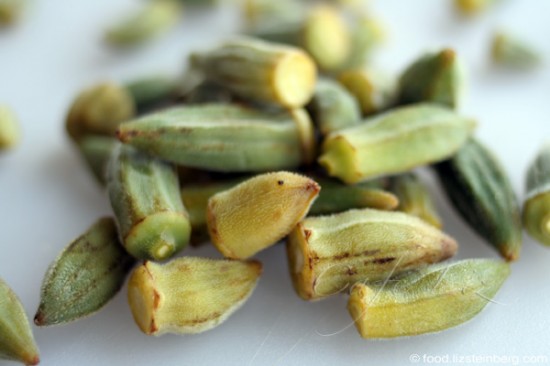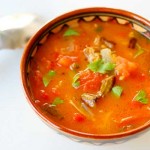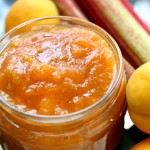
The fundamental premise of a recipe is that individual ingredients may be improved if you combine them in various ways. And thus the Israeli summer presents the recipe writer with a dilemma — the summer fruits and vegetables, at the peak of their season, are so full of flavor that they stand on their own, and it’s not clear that combining or cooking them would improve them.
So I eat them as they come, with minimal seasoning. But this doesn’t make for a recipe per se.
Here’s how I eat apricots, for example: Rinse fruit, break them in half, and eat.
That’s it.
That’s not really a recipe, now, is it?
Same for cherries. Cherries, like apricots, can be excellent when cooked or baked, but I just can’t seem to keep them around long enough to do so. We eat them too quickly.
And tomatoes — you can do lots of things with tomatoes, but mostly I slice them into rings, drizzle them with olive oil and coarse salt, and eat them. It’s simple, it’s quick, and it’s probably the best way to appreciate the fresh tang of a recently-picked tomato.
OK, so maybe those examples seem pretty obvious to you. Everyone eats apricots, cherries and tomatoes that way, you say.
So here’s another one — okra. This is peak okra season, and the markets have piles of the local variety — tiny little tips, as opposed to their elongated Indian cousins. You’ll usually find them cooked in stews.
But I like them barely cooked, and served topped with a bit of kosher salt, edamame-style.
And why not? Why not serve okra — or any fresh vegetable, for that matter — like edamame, so you can enjoy the unadulterated flavor of every individual piece? Why don’t we see this more often?
Okra is labor-intensive, since every individual piece needs to have its stem removed. It’s also notoriously gummy, but there are a handful of methods to cut down on the gooeyness. One such method is frying the okra pieces, a method I learned from a former roommate. Recently, my friend Irene introduced me to another method — briefly parboiling the okra in water and citric acid. In theory, that would be the first step of a recipe with, say, other ingredients, but I found the bright-green okra sitting in the strainer to be irresistible on its own, and no ingredient I could think of would have enhanced it.
So that’s how we ate it.
Since this is a recipe blog, after all, I’ll tell you exactly how it was done. Even if you don’t need a recipe for something this simple. Sometimes it’s good to remember that the KISS principle applies to cooking, too.

For however much okra you care to prepare:
- fresh okra (I had half a kilo)
- citric acid, lemon juice or vinegar
- a nice coarse sea salt for sprinkling
Prep time: 10 minutes.
Rinse the okra, and trim off the stems — but don’t cut off so much so that the hollow inside is exposed (see the photos above).
Bring water to boil in a pot on the stove (say, 1 to 1.5 liters of water). Add a heaping teaspoon or two of citric acid. If you don’t have citric acid, you can use another form of acid, such as vinegar or lemon juice. Once the water is boiling, dump in the okra and bring to a boil again. Let boil with the okra for about 30 seconds.
Dump the okra into a strainer, and serve with a sprinkling of coarse salt. Eat immediately.





